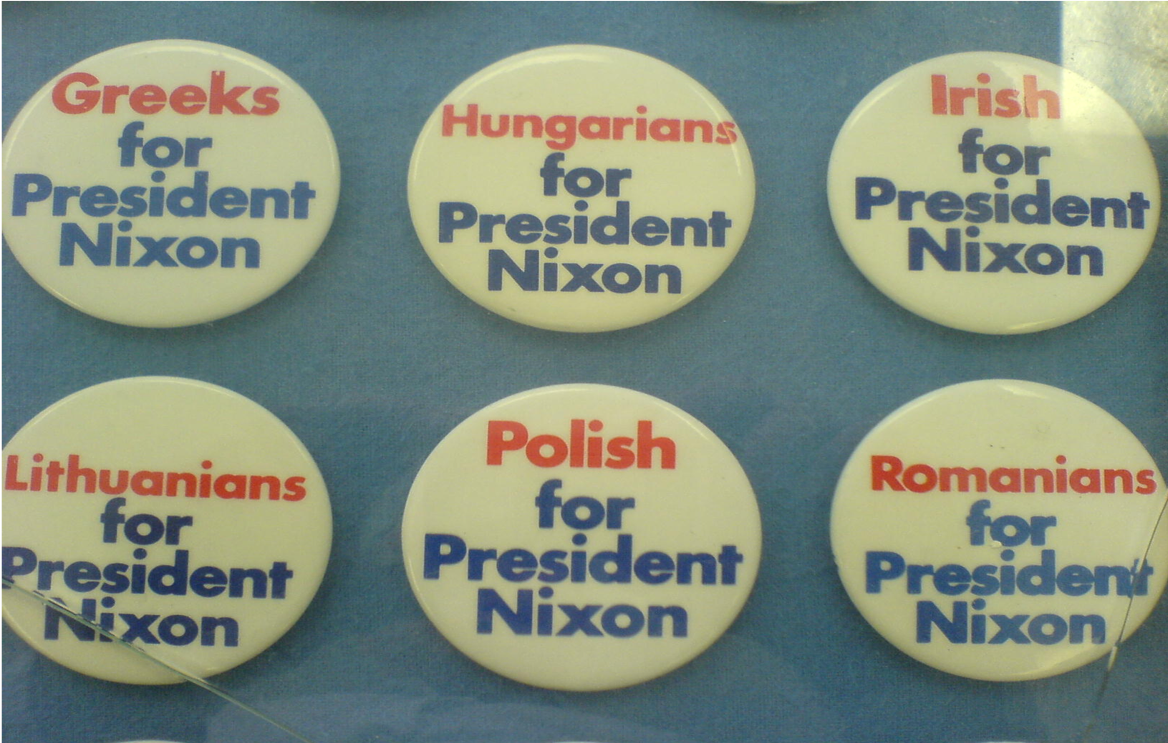
May 19, 2020, by ahzsa
Dr. Joe Merton looks at ethnicity and politics in 1970s America
Had there been a “normal” presidential election campaign this year, it might have been a surprise to see the candidates proudly declaring “Polish Power” or trudging the streets of Little Italy or Ukrainian Village. As the locus of identity politics has shifted over the past four decades, these sights have largely receded from US presidential politics. In fact, they were also rare in the two decades after 1945. Yet for a brief moment in the 1970s, a newly assertive white, European ethnic identity politics was almost impossible to avoid, and it was the presidency which served as the principal site of ethnic political mobilisation.
Historians have generally explained the White House’s attempts to harness the “New Ethnicity” as either a symptom of the cultural drift often pejoratively associated with the 1970s, or as a coded expression of a new racial conservatism unleashed by the civil rights revolution. In this new article for Presidential Studies Quarterly, I argue differently: that these efforts were rather more pragmatic than cultural or ideological, and reflected the changing institutional context in which the presidency of the 1970s operated.
For example, the presidency’s creation of new ethnic-conscious administrative structures, such as Jimmy Carter’s Office of Ethnic Affairs, recognised the distinctiveness of ethnic claims and formalised notions of ethnic pluralism within the presidency. Yet they also enabled executive actors to navigate a crowded interest group landscape and circumvent weak, divided party organisations or a recalcitrant Congress. White House enthusiasm for ethnic identity politics also reflected the institutionalisation of the civil rights revolution, as the presidency competed with the federal bureaucracy to anticipate ethnic demands for group rights and develop its own civil rights protections and policies. And in the wake of the New Deal coalition’s fragmentation, the new ethnic politics offered for both Republicans and Democrats a route to new electoral majorities which could realign national politics.
However, the presidency’s attentions did not prove favourable for the new ethnic politics. Centralisation of ethnic group outreach within the White House privileged highly personalised or symbolic ethnic strategising and shallow political majorities. Politicised interventions in civil rights programming by the presidency ignited conflict between ethnics and racial minorities and undermined coalition-building. Finally, the presidency’s often haphazard definitions of ethnic Americans or their concerns denied them the collective
identity or legitimacy necessary to gain full political recognition and incorporation. Thus to understand the rise and demise of white ethnic identity politics during the 1970s, we need to understand the institution of the presidency too.
No comments yet, fill out a comment to be the first

Leave a Reply